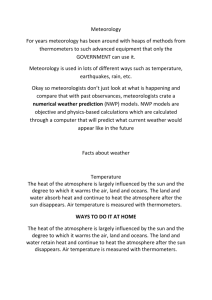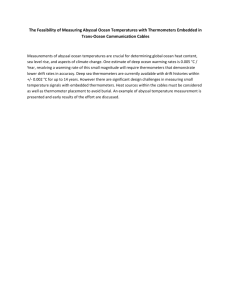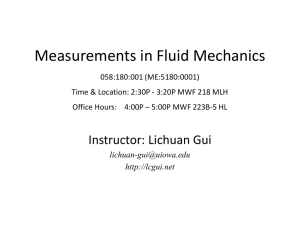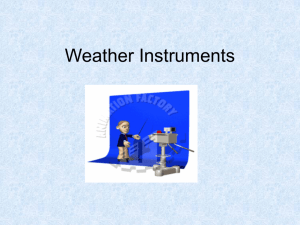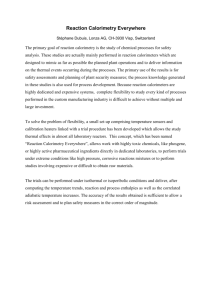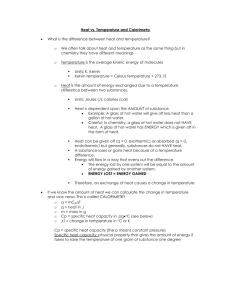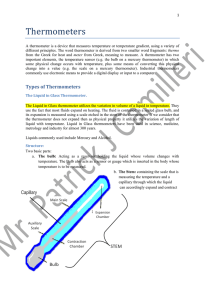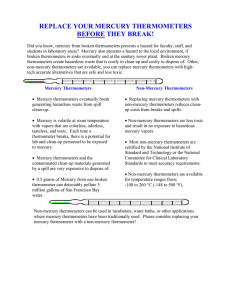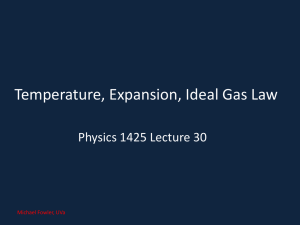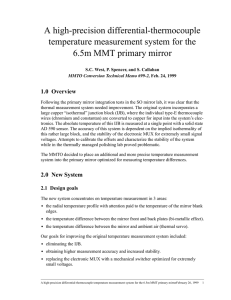5 experimental techniques in calorimetry:
advertisement
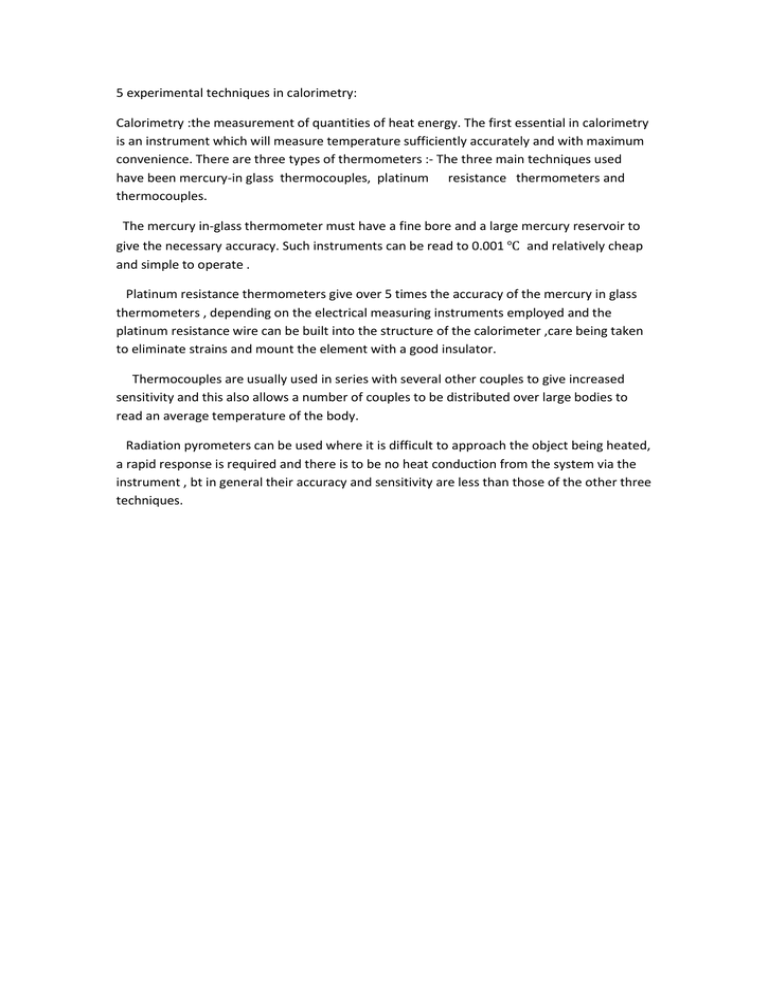
5 experimental techniques in calorimetry: Calorimetry :the measurement of quantities of heat energy. The first essential in calorimetry is an instrument which will measure temperature sufficiently accurately and with maximum convenience. There are three types of thermometers :- The three main techniques used have been mercury-in glass thermocouples, platinum resistance thermometers and thermocouples. The mercury in-glass thermometer must have a fine bore and a large mercury reservoir to give the necessary accuracy. Such instruments can be read to 0.001 ℃ and relatively cheap and simple to operate . Platinum resistance thermometers give over 5 times the accuracy of the mercury in glass thermometers , depending on the electrical measuring instruments employed and the platinum resistance wire can be built into the structure of the calorimeter ,care being taken to eliminate strains and mount the element with a good insulator. Thermocouples are usually used in series with several other couples to give increased sensitivity and this also allows a number of couples to be distributed over large bodies to read an average temperature of the body. Radiation pyrometers can be used where it is difficult to approach the object being heated, a rapid response is required and there is to be no heat conduction from the system via the instrument , bt in general their accuracy and sensitivity are less than those of the other three techniques.

